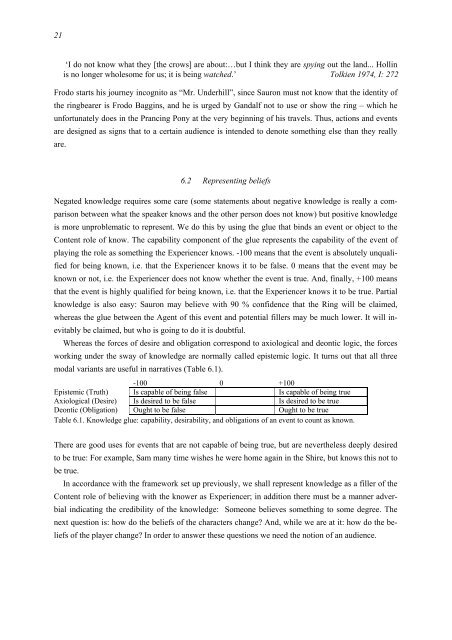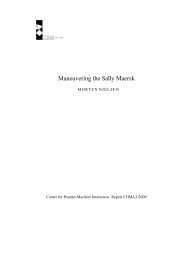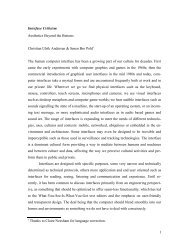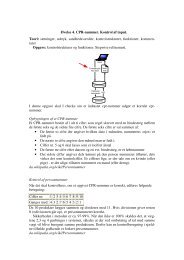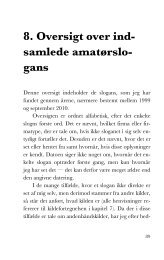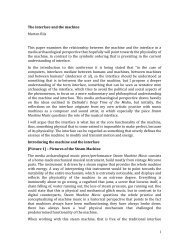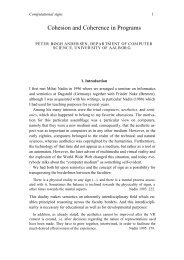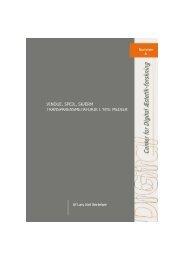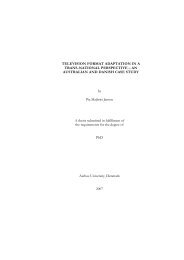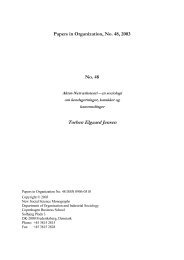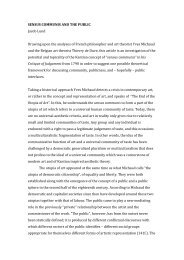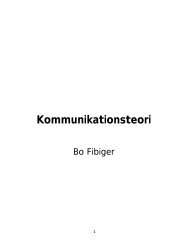Interaction and narration. Tearing Tolkien apart - CiteSeerX
Interaction and narration. Tearing Tolkien apart - CiteSeerX
Interaction and narration. Tearing Tolkien apart - CiteSeerX
Create successful ePaper yourself
Turn your PDF publications into a flip-book with our unique Google optimized e-Paper software.
21<br />
‘I do not know what they [the crows] are about:…but I think they are spying out the l<strong>and</strong>... Hollin<br />
is no longer wholesome for us; it is being watched.’ <strong>Tolkien</strong> 1974, I: 272<br />
Frodo starts his journey incognito as “Mr. Underhill”, since Sauron must not know that the identity of<br />
the ringbearer is Frodo Baggins, <strong>and</strong> he is urged by G<strong>and</strong>alf not to use or show the ring – which he<br />
unfortunately does in the Prancing Pony at the very beginning of his travels. Thus, actions <strong>and</strong> events<br />
are designed as signs that to a certain audience is intended to denote something else than they really<br />
are.<br />
6.2 Representing beliefs<br />
Negated knowledge requires some care (some statements about negative knowledge is really a comparison<br />
between what the speaker knows <strong>and</strong> the other person does not know) but positive knowledge<br />
is more unproblematic to represent. We do this by using the glue that binds an event or object to the<br />
Content role of know. The capability component of the glue represents the capability of the event of<br />
playing the role as something the Experiencer knows. -100 means that the event is absolutely unqualified<br />
for being known, i.e. that the Experiencer knows it to be false. 0 means that the event may be<br />
known or not, i.e. the Experiencer does not know whether the event is true. And, finally, +100 means<br />
that the event is highly qualified for being known, i.e. that the Experiencer knows it to be true. Partial<br />
knowledge is also easy: Sauron may believe with 90 % confidence that the Ring will be claimed,<br />
whereas the glue between the Agent of this event <strong>and</strong> potential fillers may be much lower. It will inevitably<br />
be claimed, but who is going to do it is doubtful.<br />
Whereas the forces of desire <strong>and</strong> obligation correspond to axiological <strong>and</strong> deontic logic, the forces<br />
working under the sway of knowledge are normally called epistemic logic. It turns out that all three<br />
modal variants are useful in narratives (Table 6.1).<br />
-100 0 +100<br />
Epistemic (Truth) Is capable of being false Is capable of being true<br />
Axiological (Desire) Is desired to be false Is desired to be true<br />
Deontic (Obligation) Ought to be false Ought to be true<br />
Table 6.1. Knowledge glue: capability, desirability, <strong>and</strong> obligations of an event to count as known.<br />
There are good uses for events that are not capable of being true, but are nevertheless deeply desired<br />
to be true: For example, Sam many time wishes he were home again in the Shire, but knows this not to<br />
be true.<br />
In accordance with the framework set up previously, we shall represent knowledge as a filler of the<br />
Content role of believing with the knower as Experiencer; in addition there must be a manner adverbial<br />
indicating the credibility of the knowledge: Someone believes something to some degree. The<br />
next question is: how do the beliefs of the characters change? And, while we are at it: how do the beliefs<br />
of the player change? In order to answer these questions we need the notion of an audience.


